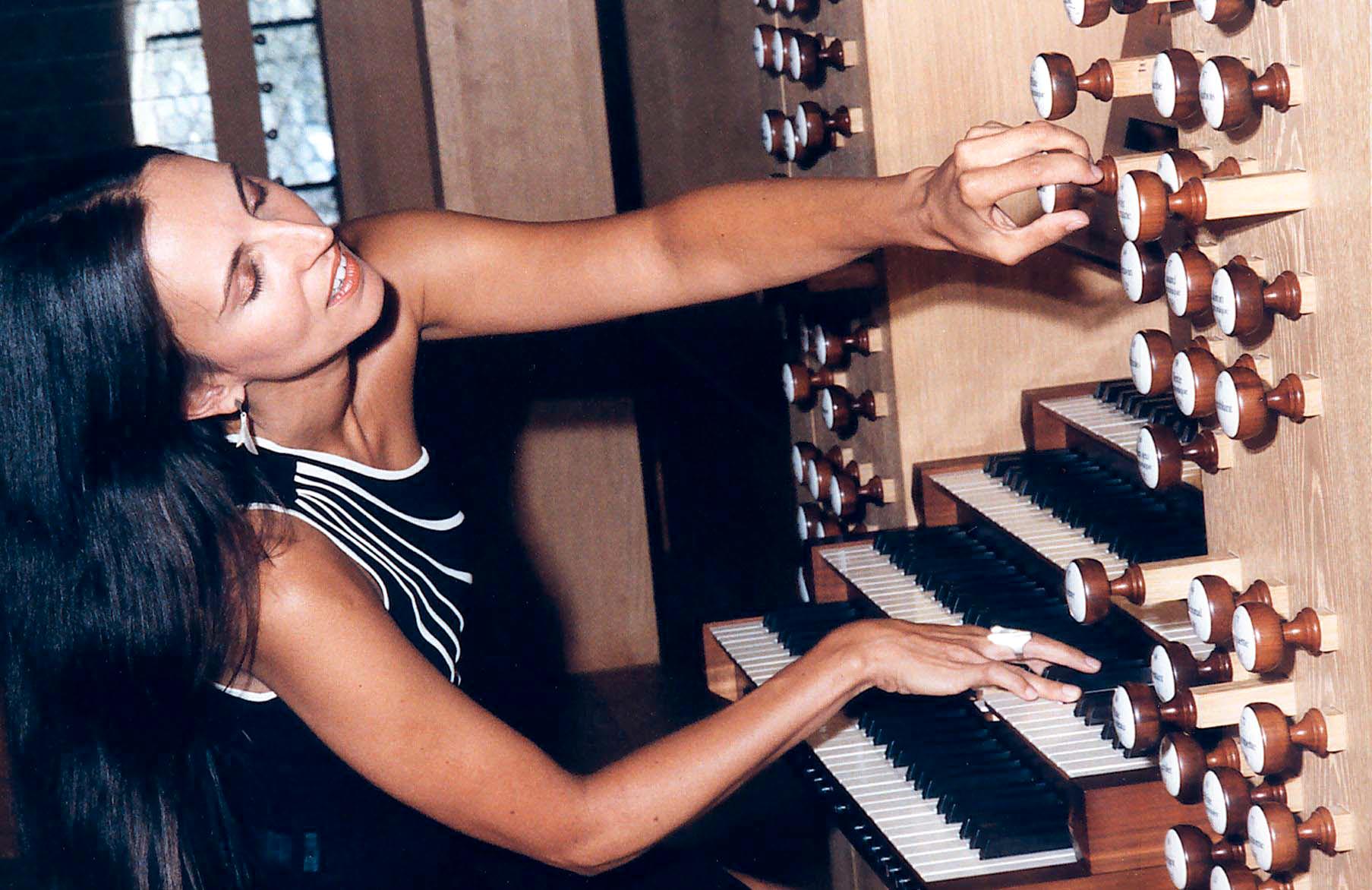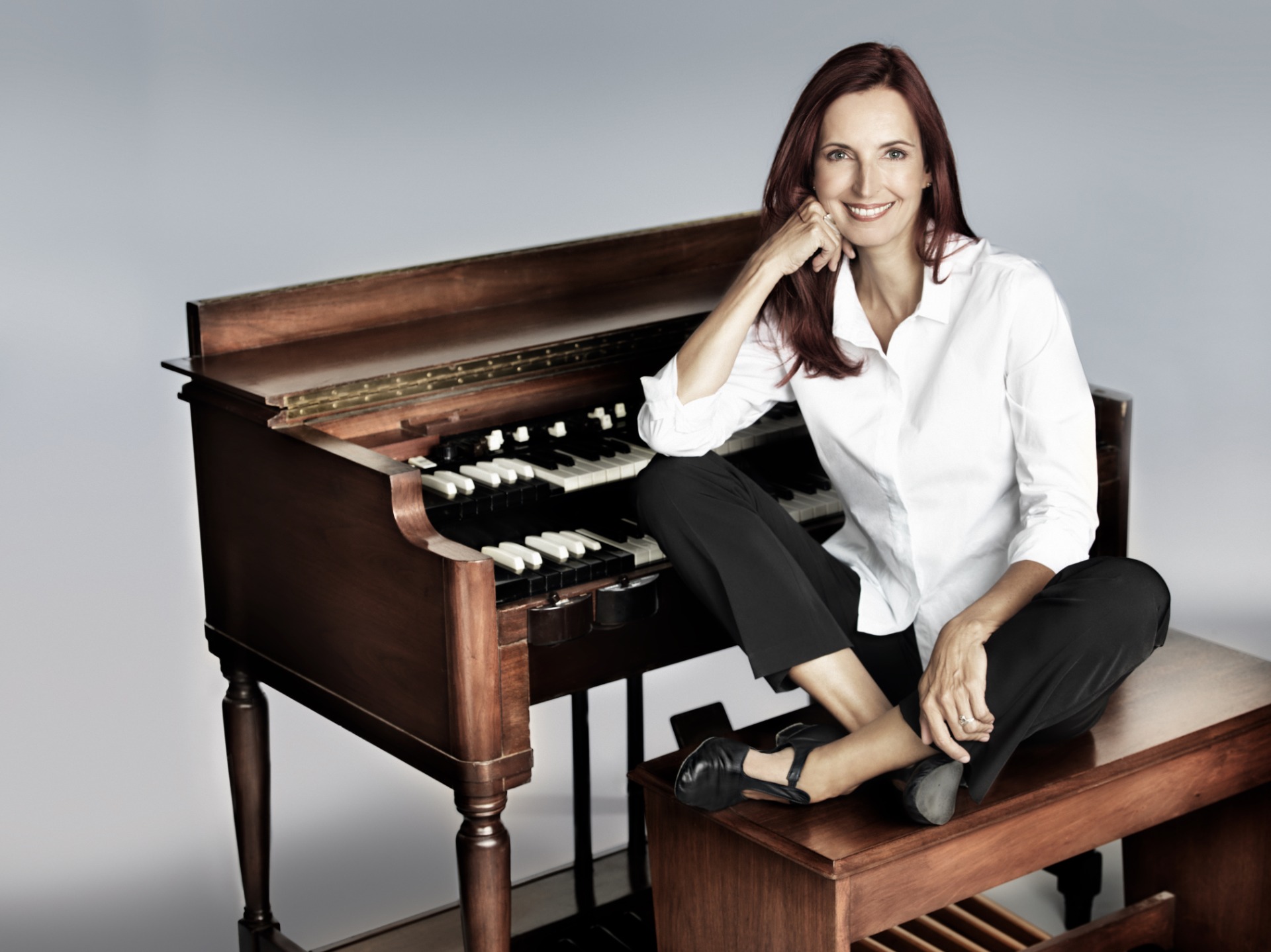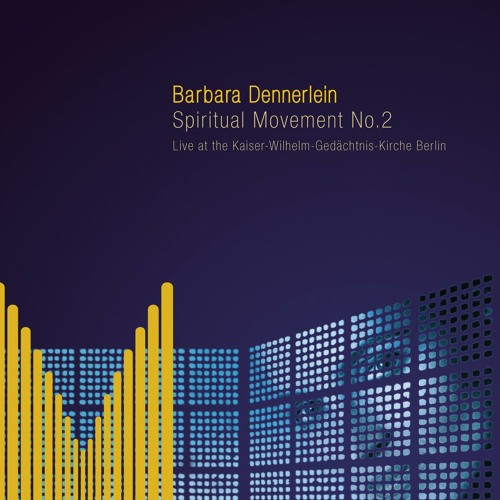Inspired by Bach : Barbara Dennerlein
"Intet nytt under solen", Bach er og har vært inspirasjonskilde for svært mange skapende mennesker - uavhengig av kunstform og sjanger. Albert Schweitzer mente alt fører til Bach, i forståelsen at Bach var et vendepunkt som alt pekte frem mot før, og alt i ettertid pekte tilbake til.
Fenomenet Barbara Dennerlein
Hva er det som gjør at Bachs drivende basslinjer og jazzens walking bass føles som samme greie??
Det er noe likt i uttrykket når jazzbassisten skaper driv i musikken og Bach gjør det samme med bassgangene - og bassgangene er selve ganglaget og derfor walking bass. Både hos Bach og i jazz er basslinjen en «veiviser» gjennom akkordskiftene. Bach tenkte alltid i uavhengige linjer, der bassen har melodisk verdi, ikke bare som grunnmur. Walking bass gjør det samme. Bass og continuo-spillere på Bachs tid improviserte ut fra en akkordskisse (figurbass). Jazzbassister improviserer walking-linjer ut fra akkordskjema.
Dermed er det duket for en som behersker begge deler - Bach og Jazz - let the music talk: rendyrket swingende gå-bass og rapide pedalben : Mine damer & herrer : Barbara Dennerlein!
to me, jazz is a synonym for freedom. freedom from prejudice and discrimination, freedom from constraints and convention
- Barbara Dennerlein

To versjoner av Bachs Toccata & Fuge i d-moll
This is what you get when you turn one of the greatest jazz organists of alltime loose in a church with a big, magnificent organ. It might sound extreme to call Barbara Dennerlein the J.S. Bach of organ jazz, but she is unquestionably an artist of extraordinary power, imagination and astonishing technical mastery. Deviously funny, intensely emotional, attuned to the most minute shifts in feeling yet given to titanically grand gestures, Dennerlein is constantly challenging herself.
- CD Review: Barbara Dennerlein – Spiritual Movement No. 2 – Live
Lucid Culture
JAZZ, CLASSICAL MUSIC AND THE ARTS IN NEW YORK CITY
Her CDs have won numerous awards, including the German Record Critics Award. Her CD "Take Off" (Verve/Universal) even reached number 1 in the jazz charts and was the best-selling German jazz album of the year. Barbara Dennerlein belongs to the small circle of German artists of international repute. On her recordings and in her concerts, she stands out as a member of a new generation of jazz musicians, and is regarded by her peers and her audiences alike as one of the leading representatives of her instruments: the legendary Hammond B3, and the mighty pipe organ.
It is an awe-inspiring experience to watch Barbara live on stage. As the most important and most successful German jazz export, she is familiar with large international festival stages and intimate clubs alike. A list of venues where she has wowed audiences is as varied as it is long: the "Blue Note" and the "Sweet Basil" in New York, "Ronnie Scott's Club" and the "Jazz Café" in London and the "Blue Note" in Tokyo; Philadelphia, Berkley, San Jose, San Diego; the Montreal, Vancouver, Toronto, Edmonton, and Victoria jazz festivals; European festivals in The Hague, the North Sea Jazz Festival in the Netherlands, the Pori Jazz Festival in Finland, the Molde Jazz in Norway, the Arhus Jazz Festival in Denmark, the Maastricht-Kortrijk Festival in Belgium, the Vitoria Festival de Jazz in Spain, and German festivals in Berlin, Frankfurt, Leverkusen, Nuremberg, Vilshofen, Burghausen, Freiburg, Hamburg, Hanover and many others. Besides her nearly endless live performances, Barbara has made numerous appearances on both domestic and international radio and TV.
Both with her own "Bebab" group and solo, Barbara is equally celebrated by critics and audiences alike on both sides of the Atlantic. The name "Bebab" is a play on "Bebop" and "Barbara" and indicates something unique for which there is no established term, no pigeonhole. She knows the value of tradition but is also at home in modern jazz, in the here and now. She is one of the few musicians who can make the connection between different styles and audiences, building bridges between the musical past and present. She is just as familiar with the grooves of youth culture as with the listening experiences of a generation that grew up with the Hammond organ boom of the fifties.
She understands better than anyone how to exploit her instrument to the full, creating a sound and a musical style that is unmistakably "Barbara Dennerlein".
Swing, bebop, blues, soul, latin and funk - for Barbara there are no rigid boundaries, only fluid transitions. Audiences are captivated by her talent, her absolute mastery of the instrument, her taste, and not least, her warm personality. The B3, it would seem, is a seamless extension of herself. Her brilliant technique has breathed new life into the venerable Hammond organ, an instrument long neglected in modern jazz. She can rightfully claim to have paved the way for the organ's current renaissance in jazz.
Born in Munich in 1964, she fell in love with one sound at an early age. While others were practicing "Für Elise" or strumming "All You Need Is Love" on the guitar, Barbara was fascinated by the sound of the Hammond organ.
She was eleven when the first home organ became part of the Dennerlein household. Her father, himself an organ fan, was acting a little bit out of self-interest when he bought the Christmas present. If Barbara lost interest, he could always play it himself! But it all turned out quite differently. Barbara never took her hands off the instrument again. And things didn't stop there either. The fourth instrument on which Barbara indulged in her passion was the "Holy Grail" of organs: an original Hammond long since out of production - the legendary Hammond B3.
How did this fraulein get so funky?
And so began Barbara's own journey of discovery into the world of music. In addition to studying the classical repertoire of standards, she began to compose her own numbers very early on. Following first performances as a thirteen-year-old, she began to play in clubs at the age of fifteen. In the early eighties she was already celebrated as the "organ tornado from Munich". Later on, "Harper's Bazar" wondered:" "How did this fraulein get so funky?", and the Los Angeles Times headlined with: "German Organist Pumps You out".
For years, Barbara has topped critics' polls in American jazz magazines and can call a worldwide community of devoted jazz friends her own. Yet through all this she has remained modest and uncomplicated, like the proverbial "girl next door", never failing to mention the support of her parents in interviews, and seeking emotional closeness to her audience as she takes them on a musical journey of discovery beyond the usual boundaries of fixed stylistic definitions. "To me", says Barbara,"jazz is a synonym for freedom. Freedom from prejudice and discrimination, freedom from constraints and convention. This is my own definition of jazz that I want to convey to the listener. Whether young or old, traditionalist or modernist, jazz fan or non-jazz fan."
Watching her perform, it is obvious that Barbara is a perfectionist, but clearly she is anything but a soulless technician. She attaches the greatest importance to musical integration in the collective. Her live bands play superbly together. Her CD productions feature hand-picked line-ups of prominent musicians versed in different styles; first rate musicians like Ray Anderson, Antonio Hart, Mitch Watkins, Randy Brecker, Jeff "Tain" Watts, David Murray, Howard Johnson, Frank Lacy, David Sanchez, Roy Hargrove, Bob Berg and Dennis Chambers.
Critical to her early success, was the support of respected record labels. Barbara's albums have been released by, among others, the prestigious labels Enja ("Straight Ahead", "Hot Stuff" and "That's Me") and more recently, Verve ("Take Off", "Junkanoo", and "Outhipped"). But early on, Barbara also established her own Label, Bebab Records, and has released numerous CDs over the years on Bebab as well.
To take the B3 beyond its traditional sound, Barbara combines her instrument with samplers and synthesizers using MIDI technology, which provides her with even more orchestral sounds. However, she never drifts off into some abstract musical science fiction but remains down-to-earth and groove-oriented. Despite her virtuosity, what matters to her most is intensity and communication with her musicians and her audience. Expressive ballads suit her just as well as high-speed escapades over the keys, or funky grooves. What's more, this energetic improviser also has made a name for herself with her own unmistakable compositions.
In 2001 Barbara set out in a new direction and released "Love Letters" on Bebab Records - a musical declaration of love with a multitude of emotions that gets under your skin and takes you on a journey into diverse musical worlds, and unique grooves and enthralling soundscapes. This was just another step in the development of an artist who never stands still and who continues to seek new challenges and directions in her music. This CD, recorded as a duo, is the result of many years of very intensive, creative collaboration with her drummer and percussionist.
In 2004 Barbara gave musical expression to her innermost thoughts and aspirations and captured these on a strikingly original and very personal CD. "In a Silent Mood" is a revealing and fascinating insight into her musical personality. Playing in her studio alone and free from interruptions or interference, Barbara really shines in this introspective solo CD performance. She augments the wonderful classic B3 sound with tasteful and subtle synthesizer and sampler sounds, all played "straight" with no studio tricks or overdubs.
If there is one thing that sets Barbara apart from all other Hammond B3 artists, it is her stunning bass pedal work that has to be seen to be believed. Listeners have often assumed she is accompanied by a bassist, but in reality those complex bass lines are Barbara's blindingly fast left foot. No one has even come close to matching her stunning bass pedal work!
The bass pedals are absolutely crucial to my way of playing the Hammond", says Barbara. "They enable me to develop a very special rhythmic structure which cannot easily be imitated by a bass player, because together with the two manuals I have a kind of rhythmic triptych at my disposal".
Equally unforgettable are the unique concerts with legendary pianist Friedrich Gulda together with Barbara on the Hammond organ in such renowned concert halls as the Philharmonic Orchestras of Cologne and Munich, the Brucknerhaus Linz, the Concert Hall and Musikverein in Vienna, the Kunstverein in Bregenz, the Tonhalle in Zurich and at the Viennese Festival Weeks. Gulda used his full musical genius to create a symbiosis of classical music and jazz beyond all limitations of style or genre. Barbara, who was a great friend of Friedrich Gulda's, takes the same approach to music in her work.
Part of Barbara's appeal is that she is a passionate, charming musician, who always asks: "Do you like jazz? What is the meaning of jazz for you?" For herself, and this is what endears her to her audience, jazz is anything but a one-dimensional affair.
My music is as varied as my emotions or the world I live in, which influences and inspires me. One style or one direction would only express one small part of my musical world.
- Barbara Denneerlein


